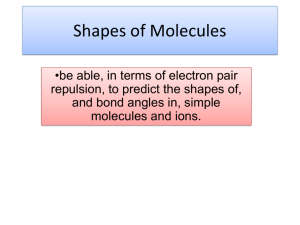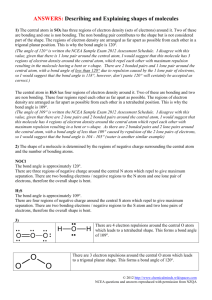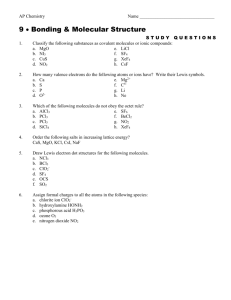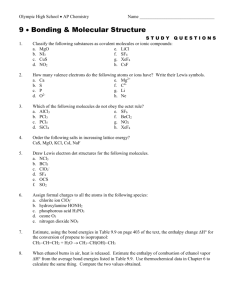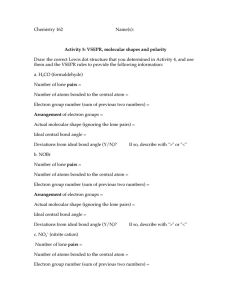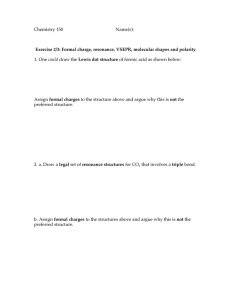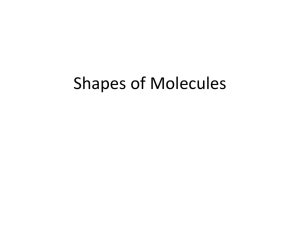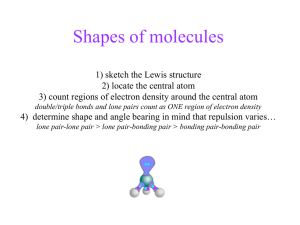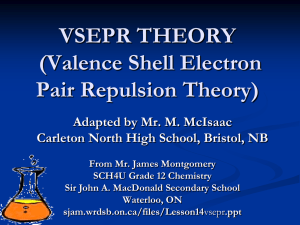Guided note sheet
advertisement
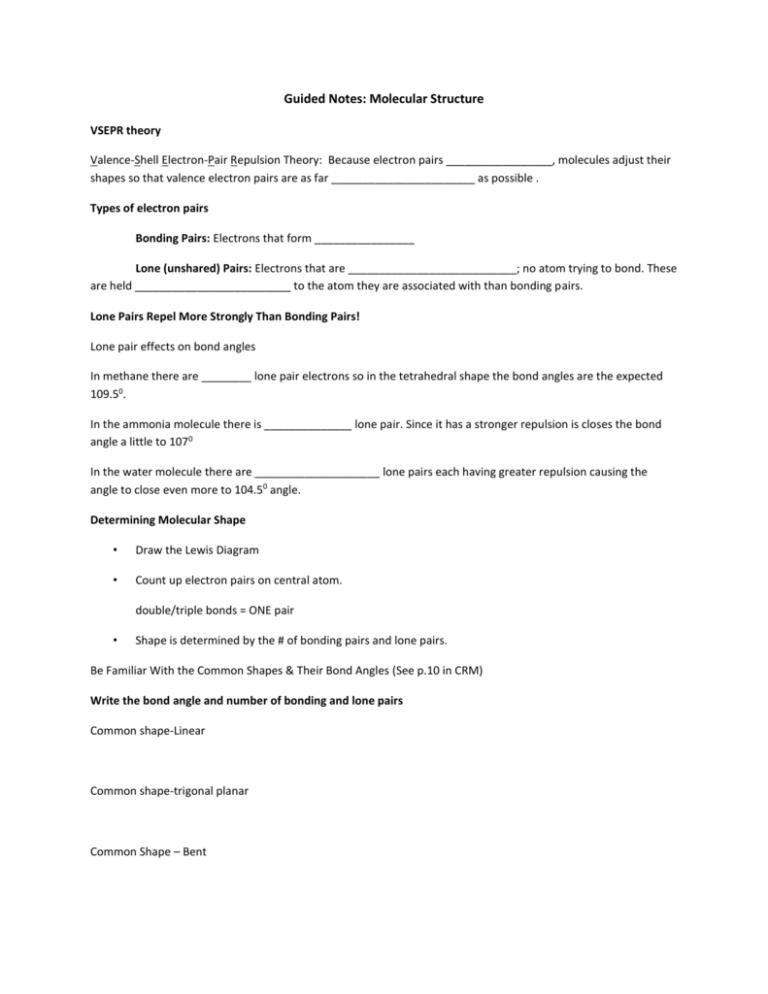
Guided Notes: Molecular Structure VSEPR theory Valence-Shell Electron-Pair Repulsion Theory: Because electron pairs _________________, molecules adjust their shapes so that valence electron pairs are as far _______________________ as possible . Types of electron pairs Bonding Pairs: Electrons that form ________________ Lone (unshared) Pairs: Electrons that are ___________________________; no atom trying to bond. These are held _________________________ to the atom they are associated with than bonding pairs. Lone Pairs Repel More Strongly Than Bonding Pairs! Lone pair effects on bond angles In methane there are ________ lone pair electrons so in the tetrahedral shape the bond angles are the expected 109.50. In the ammonia molecule there is ______________ lone pair. Since it has a stronger repulsion is closes the bond angle a little to 1070 In the water molecule there are ____________________ lone pairs each having greater repulsion causing the angle to close even more to 104.50 angle. Determining Molecular Shape • Draw the Lewis Diagram • Count up electron pairs on central atom. double/triple bonds = ONE pair • Shape is determined by the # of bonding pairs and lone pairs. Be Familiar With the Common Shapes & Their Bond Angles (See p.10 in CRM) Write the bond angle and number of bonding and lone pairs Common shape-Linear Common shape-trigonal planar Common Shape – Bent Common shape-tetrahedral Common shape-trigonal pyramidal Common shape- trigonal bipyramidal Common shape – octahedral Molecular Polarity Dipole Moment • Direction of the _____________________ bond in a molecule • Arrow points toward the more ___________________________________ atom. Determining Molecular Polarity Depends on Nonpolar Molecules - dipole moments are _____________________________________ and cancel out Polar Molecules - dipole moments are ______________________________________ and don’t cancel Therefore, polar molecules have… - asymmetrical shape (lone pairs) or - asymmetrical atom

